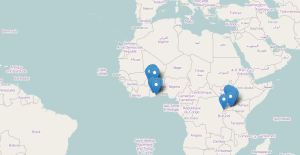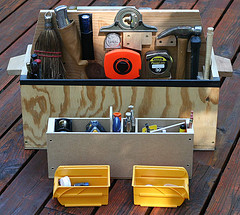by the WASHtech consortium. A short overview by Krischan Makowka (UWASNET/HORIZONT3000 Technical Advisor)
Introduction:
During the last two decades Uganda has been a preferred location for piloting and introducing new WASH technologies which focus on developing countries. Generally this has been seen as a positive Interaction between academia, NGOs and private sector companies resulting in many valuable lessons and improvements that make those systems more appropriate for the lives of Ugandans. The downside however is that much has also failed, with defunct pilot systems found all over the country and few widely shared lessons why systems failed.
The EU funded WASHtech consortium has therefore embarked on the journey to create a clear structure to the introduction of new WASH technologies in order improve success rates and better document the lessons learned. In Uganda the consortium is represented by the Appropriate Technology centre (ATC) & NETWAS-Uganda with technical support by the Swiss SKAT Foundation. At the time of writing this the project is nearing its end and the two main complementary tools are publicly available or in their final draft
Status:
1.The Technology Applicability Framework (TAF), which is a decision support tool on the applicability, scalability and sustainability of a specific WASH technology to provide lasting services in a specific context and on the readiness for its introduction.
2. The Guidelines for Technology Introduction (GTI) (which outline the Technology Introduction Process (TIP)) is a guidance document to be used to steer the multi-stakeholder-coordinated initiation of a specific WASH technology towards a local WASH service that lasts.
In order to validate these tools, the process was also tested on several WASH technologies which were introduced to Uganda in the past; some of which were successful while other seemed to have failed on a larger scale. Through this it was shown that the TAF/TIP could have significantly improved the process performance and would have prevented costly investments in technologies that ultimately failed.
Technology Applicability Framework (TAF):
The TAF is intended for assessing the applicability of new WASH technology in a specific setting before or during the piloting phase. For it a total of 18 indicators, which are represented in a matrix with six rows representing factors like social or economic impacts and three columns that focus on the perspective of key stakeholders, are graded according to a traffic light like system (see TAF profile sample in picture on previous page). Thus the overall advantages and disadvantages of a certain technology in a specific setting can be easily visualized and understood.
It is intended to be applied when a technology is being piloted, but it can also be used to support monitoring and evaluation of progress and performance of technology introduction processes. The TAF uses specific questionnaires for screening and field questionnaires for the assessment. All stakeholders are involved in the collection of data and in the generation and discussion of results. This allows all actors, including representatives from national and local government and users of the technology such as communities, to bring in their perspectives and views and to hear the opinions of others.
Guidelines for Technology Introduction (GTI):
The idea behind the GTI is that a clear process, with well-defined roles and responsibilities can avoid unnecessary road-blocks on the way of WASH technology introduction. It can also help the government, which is expected to take a lead role, to streamline its regulatory bodies & functions as well as to identify key services it can offer to innovative organizations and companies.
The core of the process outlined in the GTI is a conceptual model that separates a successful technology uptake into four distinctive phases. First there is an “invention” phase, which can be subdivided into the “piloting” and the “launching” phases. These two phases are basically what it takes to test a new invention and make it available to the general public. Then there is the so called “tipping point” phase where there is a sudden increase in the use of the invention if everything goes well. Last but not least there is a fourth, the “Uptake, operation and service” phase, which involves all the needed activities to make sure an invention can be sustainably operated or marketed. Each of these phases has specific characteristics, road-blocks and even rough time-frames one should keep in mind.
You can learn more about the TAF and GTI/TIP on: http://www.washtechnologies.net





